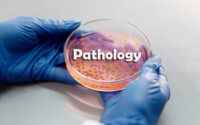Neurology Practice Set
Neurology Practice Set paper for the written examination is given below. Candidates who are looking for Neurology exam Practice Set paper can find in this section. The applied candidates who are getting prepared for the Neurology can view this page for the Neurology Last Ten Years Practice Set Papers.

Download the Neurology Practice Set & Solutions & make it as a reference for your exam preparation. Take advantage of these Neurology Practice Set Papers in a proper manner to get qualifying Marks. Last 5 years Neurology Practice Set Papers provided here. Candidates who are applied for the above exam can check and download the Neurology Practice Set Papers from here.
Practice Set on Neurology
1. A 60-year-old man is admitted to the ICU with systolic heart failure (EF of 20%). You are consulted for fluctuating hypersomnolence and periods of complete unresponsiveness. MRI shows acute infarction in the bilateral thalami. Which of these vascular variants is the | most likely cause of these infarcts?
(1) Persistent trigeminal artery
(2) Fetal origin of the posterior cerebral 3 artery (PC A)
(3) Artery of Percheron
(4) Fenestration of the anterior communicating artery (ACOMM)
2. 7th nerve exits from skull via which of the following foramen?
(1) Stylomastoid foramen
(2) Foramen ovale
(3) Jugular foramen
(4) Foramen rotundum
3. Which of the following does NOT contribute to the formation of the blood brain barrier?
(1) Astrocytes
(2) Microglia
(3) Tight junctions
(4) Basement membrane
4. Which of the following interventions/factors has NOT been proven to influence the risk of developing a post-lumbar puncture headache?
(1) Use of an atraumatic needle
(2) Bedrest post-procedure
(3) Replacement of the stylet prior to removal of the needle
(4) Use of a higher gauge (20 G) needle for the procedure
5. When the brain suffers a concussion, biomechanical forces cause membrane disruption and changes in ionic flux that are most likely to result in which of the ; following?
(1) Efflux of sodium
(2) Influx of potassium
(3) Sequestration of calcium into the mitochondria
(4) Reduced glutamate release
6. Which of the following statements is true regarding giant cell arteritis?
(1) It affects small-sized arteries
(2) It predominantly affects people between 30 and 50 years-old
(3) Jaw claudication is its most common presenting symptom
(4) ESR and/or CRP are elevated in 90-95% of cases
7. Which of the following best describes the pattern of relapse rate in multiple sclerosis during pregnancy?
(1) Its lowest in the first trimester
(2) Its lowest in the second trimester
(3) Its lowest in the third trimester
(4) It is increased throughout all trimesters of pregnancy compared to prepregnancy rates
8. Which of the following findings on brain magnetic resonance imaging (MRI) is suggestive of spontaneous intracranial hypotension?
(1) Leptomeningeal enhancement
(2) Enlargement of the basal cisterns
(3) Inferior displacement of optic chiasm
(4) Collapse of the cerebral venous sinuses
9. Which of the following substances has been implicated as the most likely cause of the imaging findings in hepato cerebral degeneration?
(1) Tron
(2) Aluminum
(3) Calcium
(4) Manganese
10. Elevated serum cholesterol is a marker for which of the following disorders?
(1) Cerebrotendinous xanthomatosis
(2) Farber disease (ceramidase deficiency)
(3) Niemann-Pick, type C
(4) Smith-Lemli-Opitz disease
11. A 25-year-old woman presents with proximal weakness and a CK of 1,256 IU/L and is found to be seropositive for Jo-1 antibodies. Which of the following tests would be most important to check given the presence of this antibody?
(1) A serum aldolase
(2) A whole blood aldolase
(3) MRI of the wrists and hands to screen for erosive arthritis
(4) High resolution chest CT to screen for interstitial lung disease
12. In a patient presenting with optic neuritis, Which of the following features is suggestive of neuromyelitis optica (NMO) as opposed to optic neuritis due to multiple sclerosis (MS)?
(1) Abnormal brain magnetic resonance imaging (MRI)
(2) Absence of pain with eye movements
(3) Complete recovery of vision
(4) Bilateral presentation
13. Bilateral independent periodic discharges are most often observed in
(1) Herpes simplex encephalitis
(2) Anoxic encephalopathy
(3) (1) and (2)
(4) None of the above
14. 20 years old man comes with complaints of 5 -8 episodes of unilateral headache every day localized to Rt orbit. They are associated with lacrimation and nasal congestion. Possible diagnoses are
(1) Common migraine
(2) Classical migraine
(3) Cluster headache
(4) Tension headache
15. Friedrichs ataxia is caused by mutation of a gene locus on which chromosome?
(1) Chromosome 4
(2) Chromosome 9
(3) Chromosome 19
(4) Chromosome 14
16. All of the following are the hallmark symptoms of Narcolepsy except
(1) daytime sleepiness
(2) loud snoring
(3) cataplexy
(4) sleep paralysis
17. The word epilepsy means “to seize” comes from which language?
(1) Greek
(2) French
(3) Italian
(4) Spanish
18. Which one of the following groups of patients who have had symptoms due to carotid stenosis is most likely to benefit from carotid endarterectomy?
(1) Patients with 30% or less stenosis
(2) Patients with 30-49 % stenosis
(3) Patients with 50-69 % stenosis
(4) Patients with 70 or more stenosis without near complete occlusion
19. Which one of the following neuroprotective agents has been proven in RCTs to significantly improve clinical outcome after an acute stroke?
(1) Calcium channel blocker
(2) Citicholine
(3) Piracetam
(4) None of the above
20. All of the following may be found in lower motor neuron lesions except
(1) Flaccid weakness
(2) Fasciculations
(3) Muscle wasting
(4) Brisk reflexes
| Practice Set | MCQs |
| Quiz | Questions and Answers |
21. 35 year old lady developed dysphagia while eating dinner at home and on arrival to hospital, her jaw was found hanging open. There is history of similar fatigable symptoms in past. The diagnosis is
(1) MND
(2) Hysteria
(3) Myasthenia gravis
(4) Polyneuropathy
22. What is the most common neurologic presentation of Neurocysticercosis?
(1) Hearing loss
(2) Seizure
(3) Dementia
(4) Blindness
23. Where are the DBS leads placed for essential tremors?
(1) Thalamus
(2) Caudate nucleus
(3) Globus pallidus
(4) Hypothalamus
24. Muscle cramps occur in which of the following neurogenic disorder?
(1) Motor neurone disease
(2) Radiculopathy
(3) Polyneuropathy
(4) All of the above
25. All are true for lambert eaton syndrome
(1) normal deep tendon reflexes
(2) presynaptic disorder of neuromuscular junction
(3) proximal muscle of lower limb are most commonly involved
(4) incremental responses on 20-50 Hz repeated nerve stimulation
26. Disorders associated with Mysthenia Gravis are
(1) Thymoma, thymic hyperplasia
(2) Hashimotos thyroiditis, Grave’s disease
(3) SLE, Hypothyroidism
(4) All of the above
27. Which drug is useful in anti MuSK antibody positive antibody?
(1) Tacrolimus
(2) Rituximab
(3) Cyclophosphamide
(4) Azathioprine
28. In myopathy clinical findings include all except
(1) Proximal limb weakness
(2) Symmetric limb weakness
(3) Decreased deep tendon reflexes
(4) Preserved sensations
29. All are dural venous sinuses except
(1) Sigmoid sinus
(2) Frontal sinus
(3) Transverse sinus
(4) Straight sinus
30. Short neck, low hairline and block cervical vertebra are features of
(1) Basiliar impression
(2) Klippel Feil anomaly
(3) Atlantoaxial subluxation
(4) Chiari malformation
31. Maxillary division of trigeminal nerve supplies
(1) Large part of nasal cavity
(2) Lower teeth
(3) Part of soft palate
(4) None
32. What is true about vagus nerve?
(1) Supplies anterior 2/3 of the tongue
(2) Carries parasympathetic fibers
(3) Has a spinal root
(4) None
33. Spinal tap is contraindicated in patients with
(1) acute purulent meningitis
(2) acute viral meningitis
(3) encephalitis
(4) ICSOL
34. An 87-year-old man is hospitalized with a small left frontal cortical acute ischemic stroke. During his hospitalization he is found to have asymptomatic paroxysmal non-valvular atrial fibrillation. Prior to discharge you decide to initiate anticoagulation therapy with apixaban. His weight is 75 kg. His creatinine is 1.0. Which of the following is the most appropriate dose to initiate for secondary stroke prevention in the setting of non-valvular atrial fibrillation for this patient?
(1) 25 mg twice daily
(2) 5 mg twice daily
(3) 10 mg once daily
(4) 10 mg PO twice daily x 7 days, then 5 mg twice daily
35. A 72-year-old man is brought to the hospital out of concern for an acute stroke. On examination his pupils are symmetric and reactive to light, extraocular movements are intact, there is no facial weakness, there is rightward deviation of the tongue, he is dysarthric, and there is a left hemiplegia (arm and leg). What “stroke syndrome” the following patient has?
(1) Left medial medullary syndrome
(2) Left ventral medial pons syndrome
(3) Right medial medullary syndrome
(4) Right ventral medial pons syndrome
36. A 40-year-old woman with a history of hypertension, hyperlipidemia and migraine headache presents to the emergency department with sudden onset maximal intensity headache that started the evening prior to presentation. Vital signs are BP 172/102, HR 64, RR 18, 100% on room air. Her exam is notable for photosensitivity and mild neck stiffness, but is otherwise normal. Non-contrast head CT is unremarkable. What is the next best step in management?
(1) Magnetic resonance imaging of the brain
(2) Administration of intravenous fluids and intravenous dihydroergotamine
(3) Digital subtraction angiography
(4) Lumbar puncture
37. An acute stroke involving the left occipital lobe and splenium of the corpus callosum could theoretically result in which of the following findings?
(1) Agraphia, acalculia, finger agnosia, and right-left confusion
(2) Alexia with agraphia
(3) Alexia without agraphia
(4) Visual agnosia with confabulations
38. Which of the following risk factors is associated with an increased risk of detecting atrial fibrillation on prolonged cardiac monitoring following a cryptogenic stroke?
(1) First ever stroke/TIA with no radiographic evidence of prior stroke
(2) Frequent premature atrial contractions on electrocardiogram
(3) Higher CHADS2 score
(4) Normal PR interval = on electrocardiogram
39. Following resection of a tumor of the anterior portion of the left temporal lobe, what field defect would be expected?
(1) A homonymous right inferior quadrantanopia
(2) A homonymous right superior quadrantanopia
(3) A monocular right inferior quadrantanopia in the right eye only
(4) A left afferent pupillary defect
40. Which of the following sensory nerves projects directly to the cerebral cortex without forming synaptic connections in the thalamus?
(1) Auditory
(2) Dural sensory
(3) Gustatory
(4) Olfactory
41. Which of the following findings is most likely in a quadriparetic patient with Guillain-Barre syndrome (GBS) two days out from symptom onset?
(1) A slow tibial motor conduction velocity in the leg
(2) Small sural sensory nerve action potential amplitude
(3) Small distal tibial compound muscle action potential amplitude
(4) Absent tibial F-waves
42. Which steroid should be given to patients with bacterial meningitis as adjunct therapy?
(1) Intravenous methyl prednisolone
(2) Intravenous dexamethasone
(3) Oral prednisolone
(4) None of the above
43. Which of the following statements regarding single fiber electromyography (SFEMG) in the diagnosis of suspected autoimmune myasthenia gravis (MG) is true?
(1) It is the most sensitive diagnostic test
(2) It is the most specific diagnostic test
(3) It is the most sensitive and the most specific diagnostic test
(4) It is neither a sensitive nor a specific diagnostic test
44. Which of the following is true regarding the position of nuclei in muscle fibers?
(1) Central nuclei are never normal
(2) Internal nuclei are a finding specific to hereditary myopathies
(3) Internal nuclei are only present in regenerating muscle fibers
(4) Myonuclei are located at the periphery of mature, healthy muscle fibers
45. Binding of acetylcholine to the postsynaptic acetylcholine receptor at the neuromuscular junction directly results in which of the following?
(1) Opening of ligand-gated sodium channels on the postsynaptic membrane
(2) Closure of voltage-gated potassium channels on the postsynaptic membrane
(3) Closure of voltage-gated sodium channels the postsynaptic membrane
(4) Closure of ligand-gated calcium channels on the postsynaptic membrane



